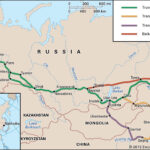Nepal, a nation celebrated for its breathtaking Himalayan landscapes and rich cultural heritage, is geographically nestled in the continent of Asia. But Where Is Nepal In Asia exactly? This landlocked country is situated in South Asia, bordered to the north by China and to the south, east, and west by India. Its strategic location places it in a region of immense geographical diversity, influencing its climate, culture, and biodiversity.
Nepal’s unique geographical identity is profoundly shaped by its dramatic relief, transitioning from fertile plains to towering mountains within a relatively short span. Approximately 75 percent of Nepal is mountainous, presenting some of the world’s most challenging terrains. From the southern plains bordering India to the northern reaches of the Himalayas, Nepal is traditionally divided into four primary geographical belts, each stretching from east to west and contributing to the country’s distinctive character.
Nepal’s Diverse Geographical Zones
To understand Nepal’s geography, it’s essential to explore these distinct belts:
The Tarai Region: Nepal’s Southern Plains
The southernmost strip of Nepal is the Tarai, an extension of the Indo-Gangetic Plain. This region is characterized by its flat, fertile land, directly adjacent to the Indian border. The Tarai’s width varies, ranging from less than 16 to over 20 miles, and it narrows in certain areas. The southern part of the Tarai boasts a 10-mile wide belt of rich agricultural land, crucial for Nepal’s food production. However, the northern section, bordering the foothills, transitions into a marshy environment, known for its wildlife and historically, as an area where malaria was endemic.
The Churia Foothills and Inner Tarai: Rising from the Plains
Moving north from the Tarai, the landscape ascends into the forested Churia foothills and the Inner Tarai zone. The Churia Range rises sharply, forming steep escarpments reaching altitudes over 4,000 feet. Between the Churia Range in the south and the Mahābhārat Range to the north lie broad basins, the Inner Tarai. These basins, situated at elevations between 2,000 to 3,000 feet, are approximately 10 miles wide and 20 to 40 miles long. Historically covered in forests and savanna grass, many of these areas have been cleared for timber and agriculture.
The Mid-Mountain Region: Valleys and Ranges
North of the Mahābhārat Range, a complex system of mountain ranges defines the mid-mountain region, extending for about 50 miles in width. Elevations here range from 8,000 to 14,000 feet. The Mahābhārat Range itself presents a steep face towards the south and a gentler slope to the north. Further north, enclosing the Kathmandu Valley, are the higher ranges of the Inner Himalaya, also known as the Lesser Himalaya, with peaks perpetually covered in snow. Within this mid-mountain belt, the Kathmandu and Pokharā valleys stand out as flat basins. These valleys were once lakebeds, formed by the accumulation of fluvial and fluvioglacial deposits from rivers and glaciers during the Pleistocene Epoch.
The Great Himalayan Range: The Roof of the World
The northernmost geographical belt is dominated by the Great Himalaya Range. This majestic range, with elevations from 14,000 to over 29,000 feet, is home to some of the world’s highest peaks. Among these iconic mountains are Everest, Kānchenjunga, Lhotse, Makālu, Cho Oyu, Dhaulāgiri, Manāslu, and Annapūrna, all soaring above 26,400 feet. Apart from scattered settlements in high-altitude valleys, this entire region is largely uninhabited due to its extreme conditions.
 Blue Thistle flower, representative of flora in Nepal's mountainous regions
Blue Thistle flower, representative of flora in Nepal's mountainous regions
Nepal’s Drainage Systems: Rivers and Valleys
Nepal’s river systems are as crucial to its geography as its mountains. These rivers not only sculpt the landscape but also provide essential resources for the population.
Key River Systems
The major rivers of Nepal – the Kosi, Nārāyani (Gandak), and Karnāli – flow southwards, cutting across the Himalayan ranges and forming deep gorges and transverse valleys. These gorges can be several thousand feet deep from the crests of the bordering ranges. Interestingly, the watershed of these rivers lies not along the highest Himalayan peaks but further north, typically in Tibet.
These rivers possess significant potential for hydroelectric power, and Nepal has collaborated with India on projects on the Kosi and Nārāyani rivers. The Karnāli River also holds immense untapped potential. Additionally, a 60,000-kilowatt hydroelectric project at Kulekhani, funded internationally, began operations in 1982, highlighting the importance of these water resources.
While the upper reaches of Nepalese rivers, flowing through mountainous regions, generally avoid major flooding, the low-lying Tarai plain is prone to severe floods. Conversely, rivers and streams in the Tarai, particularly those with low dry season flow, face pollution from domestic waste due to expanding settlements lacking proper sewage systems and increasing industrial activity. This pollution renders surface water in the Kathmandu and Pokharā valleys, as well as the Tarai, often unsuitable for drinking.
Valley Drainage: Kathmandu and Pokharā
The Kathmandu Valley, Nepal’s political and cultural heart, is drained by the Bāghmati River. This river flows southward, past the sacred Paśupatinātha temple, and exits the valley through the deep Chhobar gorge. The valley’s geology includes sandy layers acting as aquifers, resulting in springs where these layers surface. This springwater is traditionally collected for drinking, washing, and even paddy nursery cultivation before the monsoon season.
Similarly, the Pokharā Valley, located west of Kathmandu, is drained by the Seti River. It is also a flat basin formed from lake deposits, with remnant lakes like Phewa Lake, the largest in the basin. To the north, the Annapūrna massif of the Great Himalaya Range dominates the skyline, showcasing the close proximity of valley and mountain environments.
Conclusion: Nepal’s Geographical Identity in Asia
In conclusion, Nepal’s location in Asia, specifically in South Asia, is fundamental to understanding its geography. From the plains of the Tarai to the heights of the Himalayas, Nepal’s landscape is incredibly diverse. This geographical variation not only defines its physical environment but also significantly influences its ecology, culture, and the lives of its people. Understanding where Nepal is in Asia is the first step to appreciating the rich tapestry of its geographical and cultural identity.

